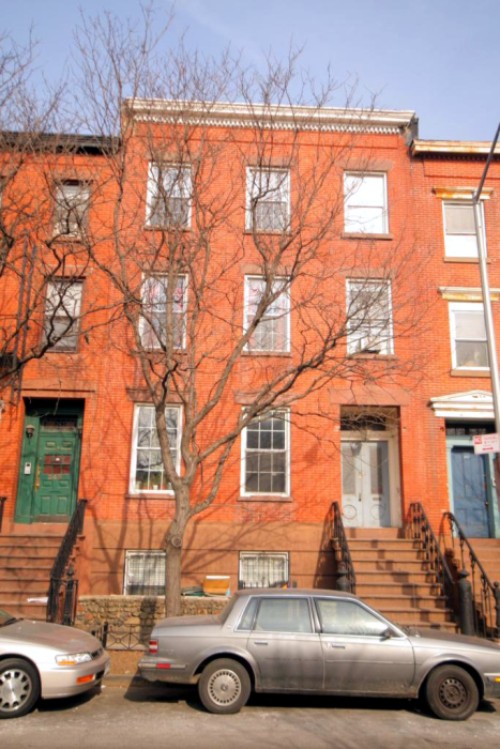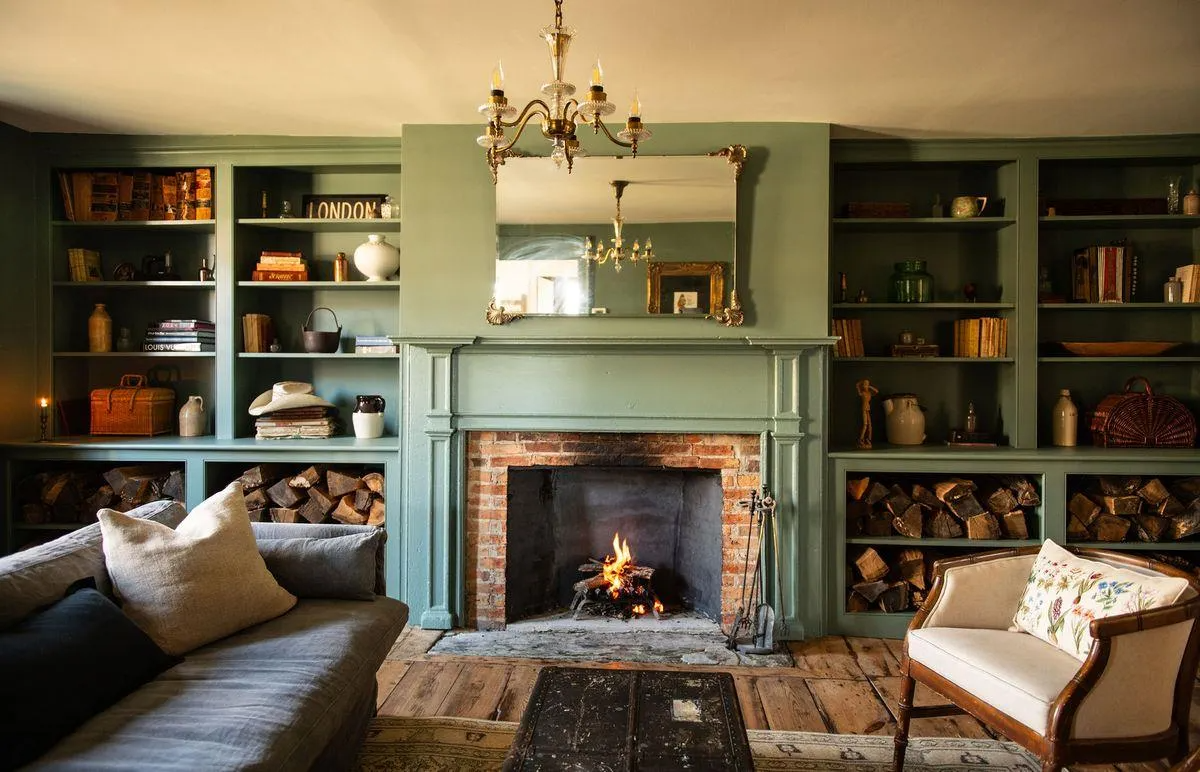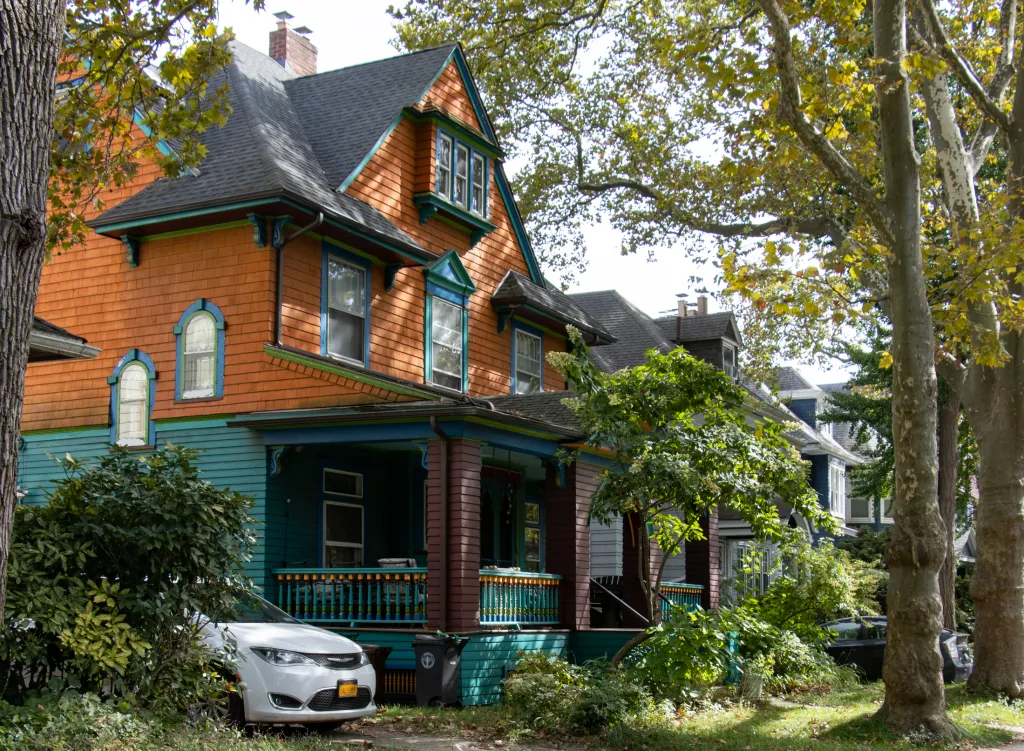Building of the Day: 245 Front Street
Brooklyn, one building at a time. Name: Row house Address: 245 Front Street Cross Streets: Bridge and Gold Streets Neighborhood: Vinegar Hill Year Built: 1852-55 Architectural Style: Greek Revival Architect: Unknown. Landmarked: Yes, part of Vinegar Hill HD (1997) The story: Like stumbling upon Brigadoon, Vinegar Hill is hidden from most people’s view, tucked away…


Brooklyn, one building at a time.
Name: Row house
Address: 245 Front Street
Cross Streets: Bridge and Gold Streets
Neighborhood: Vinegar Hill
Year Built: 1852-55
Architectural Style: Greek Revival
Architect: Unknown.
Landmarked: Yes, part of Vinegar Hill HD (1997)
The story: Like stumbling upon Brigadoon, Vinegar Hill is hidden from most people’s view, tucked away between Dumbo and the Navy Yard, cut off from Downtown Brooklyn by the ramps of the BQE and the approaches to the Manhattan Bridge. The residential buildings of Vinegar Hill were built at the same time as parts of Brooklyn Heights, share architectural styles and features. But the distance of a mile, and the development of the Navy Yard made all the difference in the histories of these neighborhoods.
Shipbuilder John Jackson purchased a large parcel of land after the Revolutionary War, and opened a shipyard on Wallabout Bay. He built his shipyard at the base of Hudson Street, and then built homes nearby for his workers. In 1801, he sold 40 acres of his waterfront land to the United States government for the Navy Yard. He then built more houses, and called the area “Vinegar Hill” in honor of the last major battle between the Irish and English, in 1798.
Meanwhile, the Sands family, brothers Comfort and Joshua, were buying up land like crazy. At one point they owned most of Dumbo, all of the land to the west of Jackson’s holdings. They were very wealthy land speculators and merchants. Comfort Sands was one of the founders of the Bank of New York, and Joshua was one of the members of the Board of Trustees of the Village of Brooklyn. They parceled their land off into lots very early, in 1787, but did not build in the Vinegar Hill area until the 1830s.
By the late 1830s, early 1840s, the descendants of John Jackson had sold off all his remaining Hudson Street plots. The Greek Revival homes built here date from the late 1840s, early 1850s, and represent the boom years for Vinegar Hill as a neighborhood of shops, businesses and homes. Most of the residents were Irish, giving the neighborhood the nickname of “Irishtown,” although many others also lived here as well. Most of the people here, no matter what their ethnicity, worked at the Navy Yard, the waterfront, or for industries that supplied both.
Vinegar Hill has this Brigadoon-like quality because so little of the original area really remains. Before the large warehouse/factory-type industrialization of the late 19th century, the building of the Brooklyn and Manhattan Bridges, the Con Edison plant, the expansion of the Navy Yard, the WWII era housing projects and the development of the highways, Vinegar Hill and its adjoining areas slowly were whittled away into next to nothing. Once, a large neighborhood of houses, churches and small businesses flowed from Hudson Street to the Navy Yard to Willoughby Street, downtown. The 1886 city map shows almost 2000 buildings. Now, we have three landmarked enclaves consisting of a block or two of surviving houses.
245 Front Street was built somewhere between 1852 and 1855. It first shows up on maps of 1855. The property was owned in 1852-1853 by John Spence. He sold it to John S. Smith, who owned it between 1853 and 1869. One of them had the house built. Spence lived next door at 247, and owned a coal yard on the corner of Bridge and Plymouth Streets. Mr. Smith was a boatswain in the United States Navy, and lived several placed in the neighborhood over the years.
The house, like most of Vinegar Hill’s remaining brick houses, is in the Greek Revival style, a simple, yet elegant type of house that was easy for the builders of the day to construct from plan books and just plain experience. By 1885, the house was a boarding house owned by a widow named Bridget Dougherty. She also owned 243 Front Street, and purchased both houses in 1880. During a city census in 1885, records show she had eleven boarders living here, all with Irish surnames. They included six laborers, three bartenders, one clerk and Mrs. Dougherty herself. Today, it’s a three family house. GMAP
(Photo:Scott Bintner for Property Shark)






What's Your Take? Leave a Comment